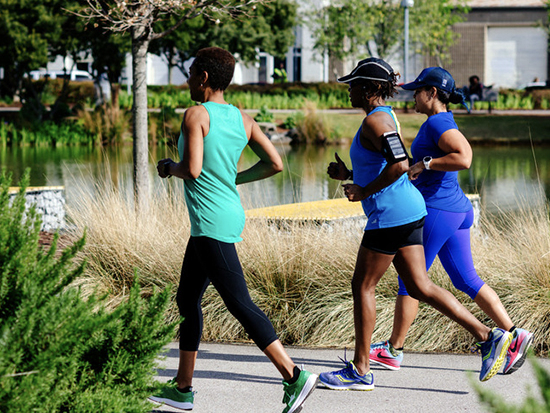By Adam Pope
UAB News
On Jan. 10, three wellness experts from the University of Alabama at Birmingham answered questions about setting goals, sticking to them and more through UAB News’ first Twitter Q&A session of 2020.
Twitter users were asked to submit questions by using #askUABexperts. Below are some of the questions and responses.
What is the best way to start and maintain a healthy diet? What foods should be incorporated into each meal?
“The MyPlate diagram is a great visual to building a healthy meal. Start by incorporating more fruits and vegetables into your daily eating pattern,” said UAB Wellness Specialist Riley Thornton, RDN. “Try getting three out of the five food groups in each meal to promote variety.”
I want to start a new workout routine. What is the best way to start one for someone who is moderately active and a runner?
“If you are consistently doing moderate exercise, a way to change things up is to add some high-intensity exercise at some point in your workout,” said Beth Kitchin, Ph.D., RDN, assistant professor in the UAB Department of Nutrition Sciences. “Some examples are walking up hills, cycling or step aerobics. The other thing you can do to change things up is adding in strength training with exercise bands or weights. Don’t add too much too soon. Remember safety first.”
How do you keep a healthy balance with nutrition facts? What are the most important facts in regard to calories, carbs, sodium and protein? Is there a resource to calculate what is best for you?
“Yes, it’s a jungle out there when it comes to getting accurate nutrition information,” Kitchin said. “You might consider meeting with a registered dietitian. Sometimes starting with keeping a food record will help you spot problem areas in your daily diet. This can help guide changes you need to make. Also, check out the new food label at fda.gov.”
Why is it important to monitor your heart rate during exercise?
Your heart rate increases with increasing exercise intensity — higher intensity equals higher heart rate,” said Associate Professor and Chair of the Department of Human Studies Eric Plaisance, Ph.D. “We can predict the number of calories you are burning while you are exercising, and by doing so, we can establish a more objective exercise program. For example, if weight loss is a goal, knowing how many calories you are burning per week can help us predict how much weight you may lose during a period of time.”
Is there a workout you would recommend for those wanting to give HIIT a try?
My recommendation is to do between two and three minutes of high-intensity exercise to the point where you fatigue, then take a one-minute break,” Plaisance said. “Then, do another interval for two to three minutes for a total of three or four intervals. Try starting at three intervals, then work up to four and max out at five intervals. The total time to start is 20 minutes, then work up to 30 minutes. Start in small increments and ramp up from there. HIIT gives you results similar to what we are seeing with continuous, lower-intensity exercise but at a fraction of the time required.”
To see more responses, click here.





